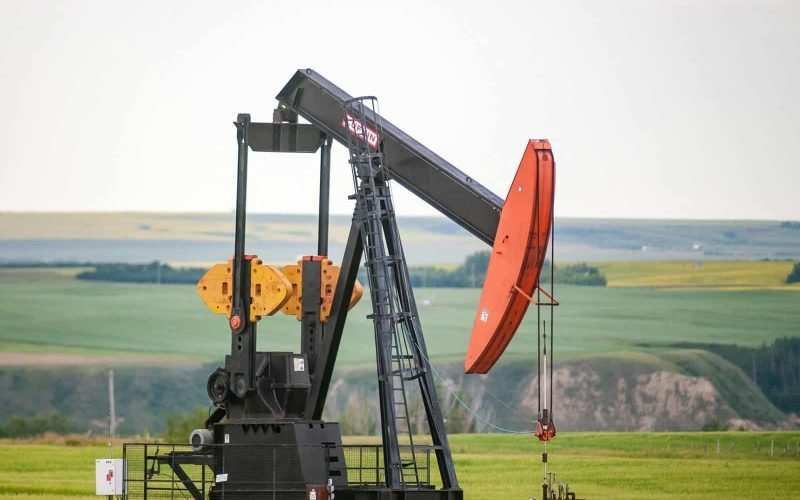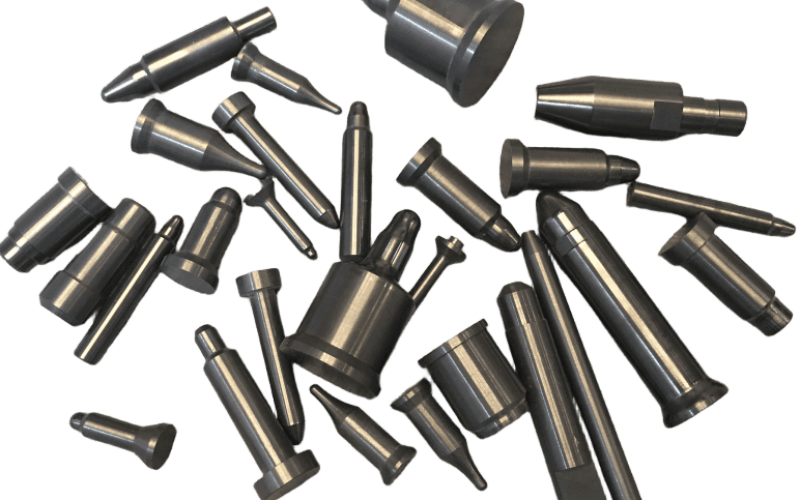Oil drilling is tough work. The equipment faces extreme conditions like high pressure, heat, and corrosive fluids. This can wear out parts quickly. But, ceramic components can help make the equipment last longer.
Imagine you’re drilling deep into the earth to find oil. If a part breaks, it stops everything. This means lost time and money. Plus, it can be dangerous. So, we need equipment that lasts. Durable equipment means fewer breaks and safer work.
Table of Contents
Introduction: The Importance of Durable Oil Drilling Equipment
Oil drilling is a big job. It involves digging deep into the earth to find oil and gas. The equipment used, like drill bits, pumps, and pipes, works in very tough conditions. These conditions include high pressure, extreme heat, and corrosive fluids. If the equipment breaks, it can stop the whole operation. This costs a lot of money and can be dangerous. So, making the equipment last longer is super important.
One way to do this is by using ceramic components. Ceramics are special materials, like alumina and silicon carbide, that are very hard and can handle heat and corrosion. This article will explain how these ceramics help, what parts they can improve, and how to use them right.
Let’s start with a key takeaway to grab your attention. Here’s a table with the most valuable info you might need:
| Ceramic Property | Benefit for Oil Drilling | Example Component |
| High Hardness | Resists wear from rocks and sand | Drill bit nozzles |
| High Compressive Strength | Handles deep well pressure | Pump liners |
| Thermal Stability | Works well in high heat | Wear sleeves |
| Chemical Inertness | Doesn’t react with corrosive fluids | Electrical insulators |


Why Durability is Crucial in Oil Drilling
Durability means how long something lasts before it breaks. In oil drilling, durability is key because the equipment faces extreme conditions. For example, deep wells can have pressures of thousands of pounds per square inch and temperatures over 300 degrees Fahrenheit. If a part fails, it can cause downtime, which means no drilling and lost money.
Challenges to Equipment Durability
Oil drilling equipment faces many challenges. Let’s list them out:
- High Pressure and Temperature: When you drill deep, the pressure and heat go up. This can bend or melt metal parts.
- Corrosive Fluids: The fluids used in drilling, like mud, can eat away at metal. Some wells have acidic or salty water, which is even worse.
- Abrasive Wear: Rocks and sand from the ground can scratch and wear down parts like drill bits and pipes.
- Vibration and Shock: Drilling causes a lot of shaking. This can tire out materials, like bending a paperclip back and forth until it breaks.
These challenges make it hard for equipment to last. But ceramics can help solve these problems.
How Ceramic Components Address These Challenges
Ceramics are not like metal or plastic. They have special properties that make them perfect for oil drilling. Here’s how:
- High Hardness: Ceramics are very hard, like diamond. This means they don’t get scratched by rocks or sand. For example, silicon carbide is one of the hardest materials, so it resists abrasive wear.
- High Compressive Strength: Ceramics can handle a lot of squeezing. This is important for deep wells with high pressure. Alumina, for instance, has great compressive strength, so it’s used in pump liners.
- Thermal Stability: Ceramics don’t change shape much when it gets hot. They can handle temperatures over 1,000 degrees Fahrenheit without melting. This is crucial for parts near the drill bit, where it’s super hot.
- Chemical Inertness: Ceramics don’t react with chemicals. This means they don’t corrode when exposed to drilling fluids or salty water. Zirconia, for example, is very resistant to corrosion.
These properties make ceramics last longer in the harsh conditions of oil drilling.
Specific Examples of Ceramic Components in Oil Drilling
Now, let’s look at where ceramics are used. Here are some examples:
- Pump Liners and Plungers:
- Pumps move drilling fluids, and they get a lot of wear. Ceramic liners, made from alumina or silicon carbide, resist this wear. They also handle the pressure and don’t corrode. This means the pump lasts longer, reducing downtime.
- Pumps move drilling fluids, and they get a lot of wear. Ceramic liners, made from alumina or silicon carbide, resist this wear. They also handle the pressure and don’t corrode. This means the pump lasts longer, reducing downtime.
- Drill Bit Nozzles:
- Drill bits have nozzles that shoot fluid to cool and clean the bit. Ceramic nozzles, like those made from silicon carbide, don’t erode from the high-speed fluid. This keeps the fluid flow steady and the bit working longer.
- Wear Sleeves and Bearing Components:
- Downhole tools, like those used in measurement while drilling (MWD), have moving parts. Wear sleeves and bearings made from ceramics reduce friction and wear. This extends the life of the tool, saving money on replacements.
- Downhole tools, like those used in measurement while drilling (MWD), have moving parts. Wear sleeves and bearings made from ceramics reduce friction and wear. This extends the life of the tool, saving money on replacements.
- Electrical Insulators:
- Electronics in downhole tools need insulation. Alumina ceramics are great for this because they handle heat and electricity well. This protects the electronics, making them last longer in hot conditions.
These examples show how ceramics can be used in different parts of the equipment to enhance durability.
Choosing the Right Ceramic Material
Not all ceramics are the same. You need to pick the right one for the job. Here’s a table to help:
| Ceramic Material | Key Properties | Best For |
| Zirconia (ZrO2) | High toughness, thermal shock resistance | Parts with rapid temperature changes |
| Alumina (Al2O3) | High hardness, thermal stability, corrosion resistance | Pump liners, electrical insulators |
| Silicon Nitride (Si3N4) | High strength, thermal shock resistance, wear resistance, corrosion resistance | Ball bearings, valves, high-stress components |
| Silicon Carbide (SiC) | Super hard, thermal conductivity, wear resistance | Drill bit nozzles, wear sleeves |
For example, if you need something for high heat, silicon carbide is a good choice. If you need something tough and resistant to sudden temperature changes, go for zirconia. Pick based on the conditions your equipment faces.
Best Practices for Installation and Maintenance
Using ceramic components is great, but you need to do it right. Here are some tips:
- Proper Installation:
- Make sure the ceramic parts fit perfectly. If they’re misaligned, they can crack under stress. Handle them gently, as ceramics can chip.
- Make sure the ceramic parts fit perfectly. If they’re misaligned, they can crack under stress. Handle them gently, as ceramics can chip.
- Regular Inspection:
- Check the parts often for signs of wear or damage. Look for cracks or chips. Replace them before they fail to avoid downtime.
- Check the parts often for signs of wear or damage. Look for cracks or chips. Replace them before they fail to avoid downtime.
- Appropriate Handling:
- Ceramics are brittle, like glass. Don’t drop them or hit them hard. Use special tools to install them to prevent damage.
- Compatibility with Drilling Fluids:
- Make sure the ceramic doesn’t react with the fluids you use. For example, some ceramics might not work well with very acidic fluids. Check the material specs to ensure compatibility.
- Make sure the ceramic doesn’t react with the fluids you use. For example, some ceramics might not work well with very acidic fluids. Check the material specs to ensure compatibility.
Following these steps will help you get the most out of your ceramic components.
Here’s something you might not expect. Using ceramic components can save a lot of money. How? By reducing downtime. If parts last longer, you don’t need to stop drilling to fix them as often. This can save companies millions of dollars, as downtime can cost a lot per day. Plus, fewer repairs mean less labor and fewer replacement parts, which adds up to big savings.
In summary, ceramic components can significantly enhance the durability of oil drilling equipment. They resist wear, corrosion, and high temperatures, making them perfect for the tough conditions of oil drilling. By using them in parts like pump liners, drill bit nozzles, and wear sleeves, and following best practices for installation and maintenance, you can make your equipment last longer. This leads to reduced costs, increased efficiency, and safer operations.
So, next time you think about oil drilling, remember: ceramics are a key to making it work better and last longer.
Ready to Transform Your Engineering Solutions?
No industrial challenge is too complex for Eshino. From precision ceramic rods and advanced bushings to customized nozzles and other high-performance components, we engineer solutions that combine exceptional durability, thermal resistance, and precision to meet your specific needs. Whatever your industry demands, Eshino delivers tailored expertise you can trust.

